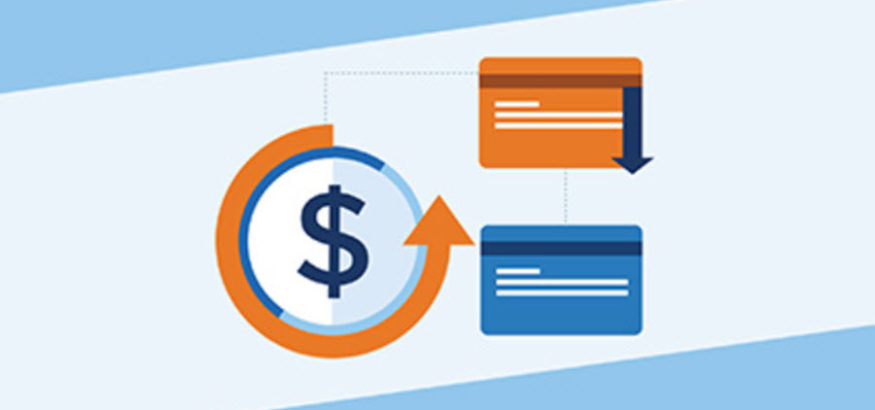Understanding Credit Card Balance Transfers – Pros & Cons
Get the most out of a balance transfer
If you’re looking to gain control of your credit card debt, it may be time to consider a balance transfer credit card. It’s necessary to consider the promotional period of the credit card, though, being sure to pay on the debt as much as possible within that time frame.
Use these tips to have a successful balance transfer, while avoiding the debt trap.
- What is a credit card balance transfer?
- Win a balance transfer deal with just three steps
- What you need to know before electing to do a balance transfer
- Managing long-term debt issues
What is a credit card balance transfer?
Some credit cards offer the option to do a balance transfer from previous credit cards. The transferred debt usually commands a lower interest rate for a period of time- otherwise known as the “honeymoon period.”
When this promotional period ends, it will attract a higher interest rate. It’s important to refrain from collecting new debt from this card, and use this opportunity to pay down existing debt while the interest is low. Unfortunately, balance transfer credit cards have a potential to become a debt trap. When people take out a line of credit and fail to pay down their debt during the honeymoon period, they find they’re incurring high interest rates that halt their debt payoff.
Win a balance transfer deal with three steps
The following are three steps to control your debt with a balance transfer:
Step 1: Cancel old credit cards
Avoid going further into debt by cancelling old credit cards the moment the balance transfers to the new card. The sooner you cancel, the less likely you are to accumulate additional debt.
Step 2: Make a plan for repayment
The only way you can benefit from a balance transfer deal is by paying off your existing debt during the period of low interest. If you don’t, you may find that the interest after the honeymoon period actually exceeds the interest you were paying on your previous cards.
Step 3: Refrain from using your new card until you pay off the transferred balance
Typically, the lower interest rate only applies to the balance that’s transferred from another card, and any new charges will incur a higher interest rate. It’s much more effective to pay off the current balance before making any charges to your new card.
Because payments are often applied to the highest debt first, a debt with high interest will be paid, before chipping away at your balance transfer. This strategy suggests that you may not reap the benefits of a balance transfer, and could end up with more debt than when you started.
Try strategies that help you avoid temptation with using your new card by placing it out of sight at home, preventing it from being readily available to you when you’re out of the house.
Smart Tip: Automate your payments by setting up automatic transfers from your bank to your credit card every payday, for the duration of the promotional period.
What you need to know before electing to do a balance transfer
It’s important to weigh all of the aspects of a balance transfer before making your decision, because there’s more to it than a lower interest rate for a period of time. Research your available options and consider the following details to be certain that this method will help you get in control of your debt:
- Start date of the balance transfer- When does this promotional period begin? The day you apply, the day the card is approved, or the date the balance is officially transferred to the new card?
- Fees and charges- get clear on whether or not the fees will prevent you from reaping the benefits of a low interest rate. Read the fine print for administrative fees, late payment fees; cash advance fees, international transaction fees, and handling fees. Make sure you entertain all of them to know if they’ll outweigh the touted perks.
- Interest rate on new purchases- The standard interest rate of the new card (likely the interest rate that will apply after the promotional period ends), will probably apply to new purchases. Evaluate the terms and conditions of the card and make sure you know the interest rate that applies to new purchases.
- “Interest-free days” and their conditions- you may have the option to make a payment on a purchase within a certain amount of days in order to avoid interest, but with balance transfers, this “interest-free” period may not apply to your purchases.
- Promotional period- It’s common to find promotional periods that last between 6 and 18 months. Discover just how long your promotional period will be and then consider whether or not your repayment plan will be effective for that time frame. Can you afford to pay down your balance transfer within 6 months? Do you need a longer promotional period to allow you to pay off your debt?
- Standard interest rate after promotional period- At the end of the honeymoon period, standard rates are applied to the balance, and you’ll want to know exactly what that rate will be.
Managing long-term debt issues
If you’re thinking of doing a balance transfer because you feel you’re in over your head with credit card payments, talk with your creditors to see if you can negotiate a more manageable payment plan.
There may also be local initiatives and programs in your town for debt management that can guide you through the process of regaining control of your financial future.
Consider all the aspects of a balance transfer before making a final decision. Then make a commitment to pay the transferred balance amount before the promotional period is over, and avoid losing control of your debts.

